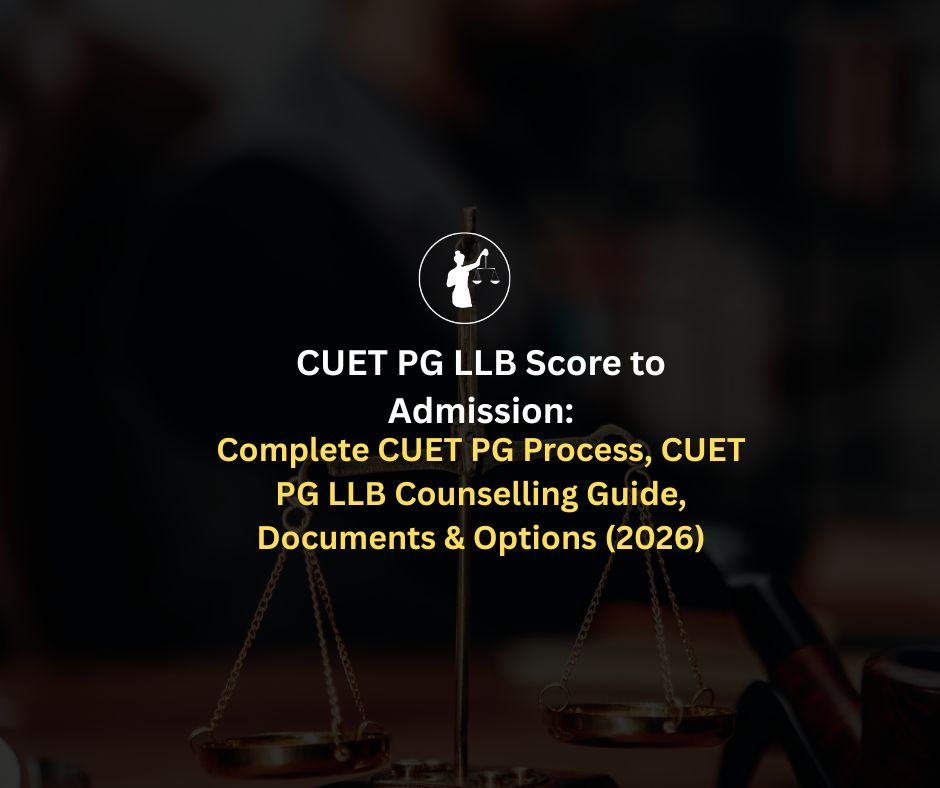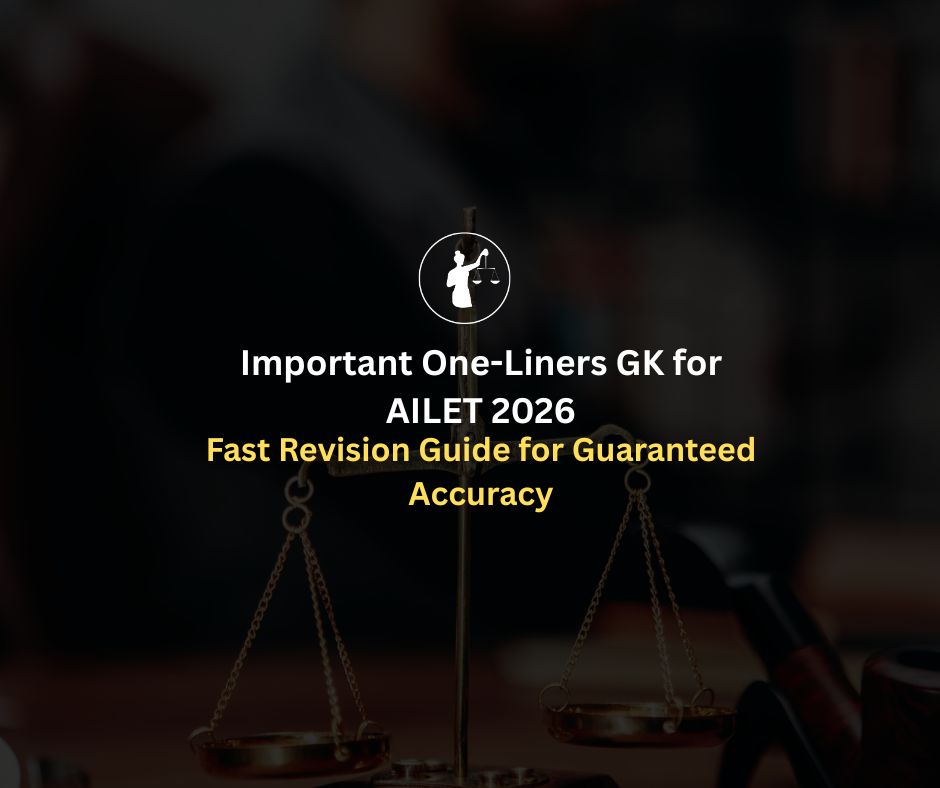For aspiring LLB students, the CUET PG (Common University Entrance Test Postgraduate), plays a crucial role in gaining admission to one of India's most prestigious universities like Delhi University and Banaras Hindu University.
This national-level entrance exam has become the gateway for students who wish to pursue a law degree at Delhi University, offering a fair and standardized assessment of their skills and knowledge.
The CUET PG LLB Paper Code is ( COQP11 ). This exam is specifically designed to evaluate candidates on various aspects crucial for success in the legal field, making it a significant hurdle for those aiming to secure a seat in the LLB program at Delhi University. From understanding the exam structure to mastering the syllabus, excelling in the CUET PG Test is essential for any law aspirant.
ACE CUET PG LLB WITH MENTORSHIP FROM TOPPERS
The CUET PG Exam is designed to assess a candidate's aptitude, subject knowledge, and analytical abilities. It offers a standardized platform for postgraduate admissions across various fields, including law.
The CUET PG Test is structured to include multiple-choice questions (MCQs) and is a Computer Based Test( CBT). The exam covers various sections depending on the specific program, and for law aspirants, the CUET PG LAW section focuses on legal aptitude, reasoning, and general awareness, among others.
Importance of CUET PG for LLB Aspirants
For LLB aspirants targeting Delhi University, the CUET PG LAW exam is of paramount importance. Delhi University's law program is one of the most sought-after in the country, and the CUET PG Test serves as a key determinant of eligibility for this program. Scoring well in this exam is crucial for securing a place in the highly competitive LLB program.
The significance of CUET PG lies in its ability to level the playing field for students from different educational backgrounds. By providing a uniform evaluation process, the exam ensures that admissions are based on merit rather than subjective criteria.
For those aiming for a legal career through Delhi University, excelling in the CUET PG exam is the first and most essential step in their journey.
Eligibility Criteria for CUET PG from DU LLB ( COQP11 )
Before diving into the preparation for the CUET PG exam, it is essential to understand the eligibility criteria to determine who can appear for this crucial test.
For those targeting Delhi University through the CUET PG LAW exam, there are additional criteria that must be fulfilled:
General category candidates must have a minimum of 50% marks in their graduation degree. For the SC/ST category, they must score 40% marks in their qualifying degree. For the OBC, PWD, and CW categories, a minimum score of 45% is required in the qualifying degree.
Foreign students wishing to apply for LLB through CUET PG at Delhi University may have to meet additional criteria, such as proficiency in English and equivalence of their previous qualifications.
There is generally no age limit for appearing in the CUET PG Test.
Candidates who are appearing in the final year of the UG degree examination can also apply for the entrance exam.
Understanding the exam pattern and structure of the CUET PG LAW exam is crucial for effective preparation. The exam is designed to assess various skills essential for success in the field of law, and being familiar with the format can help you strategize your approach.
Here's the exam pattern information for the CUET PG LAW exam in a table format:
Understanding the exam pattern and marking scheme of the CUET PG LAW exam will help you prepare strategically, manage your time effectively during the test, and approach each section with confidence
Test your preparation with a free mock test
Understanding the syllabus of CUET PG Law is substantial for effective preparation. The syllabus is designed to test various skills and knowledge areas essential for a career in law.
Here’s a detailed breakdown of the syllabus and key topics to focus on:
The Question Paper which will have 75 questions.
All questions will be based on Subject-Specific Knowledge.
All questions are compulsory.
The Questions will be Bilingual (English/Hindi).
General Aptitude:
Logical Reasoning:
Download Last Year CUET PG Question Papers
Preparation Tips for CUET PG LAW ( COQP11 )
Book a free counseling Call with our experts
Time Management Strategies
Create a Study Schedule:
Divide your study time into blocks for each subject based on your strengths and weaknesses.
Allocate specific time slots for CUET PG LAW preparation and stick to the schedule consistently.
Prioritize Topics:
Focus on high-weightage and frequently tested topics. Start with subjects you find challenging and gradually move to areas where you are more confident.
Set Achievable Goals:
Set daily, weekly, and monthly study goals. Regularly assess your progress to stay motivated and on track.
Balance Study and Revision:
Ensure that your schedule includes time for both learning new concepts and revising previously studied material. Regular revision helps in retaining information.
Incorporate Breaks and Downtime:
Take short breaks during study sessions to avoid burnout. Incorporate relaxation techniques and hobbies to maintain mental well-being.
By following these preparation tips, utilizing recommended study materials, managing your time effectively, and practicing with mock tests, you'll be well-prepared for the CUET PG LAW exam and increase your chances of securing admission to the LLB program at Delhi University.
Preparing for the CUET PG LLB exam requires consistency, smart planning, and self-awareness.
While most aspirants focus on what to do, it's equally important to know what not to do.
Avoiding these common mistakes can significantly improve your chances of cracking the exam with a high score.
One of the most common mistakes is jumping into preparation without fully understanding the CUET PG LLB exam pattern.
Each section, Legal Reasoning, English, GK, Logical Reasoning, and Computer Basic,s has specific weightage and question types.
Blind preparation without referring to the official CUET PG LLB syllabus (COQP11) is a huge risk. Students often waste time on irrelevant topics and miss out on scoring areas. Always refer to the latest syllabus released by NTA and create a subject-wise checklist.
Since this section carries significant weightage, ignoring Legal Reasoning can drastically reduce your overall score.
Many aspirants focus only on general subjects like English and GK, underestimating how crucial legal aptitude is for the CUET PG LLB entrance exam.
Depending solely on YouTube videos, one book, or one test series can limit your exposure to different question patterns.
Many students delay mock tests till the end.
Regularly taking CUET PG LLB mock tests helps you improve speed, accuracy, and exam temperament.
It also gives you real-time feedback on your preparation.
Without a proper timetable, your preparation becomes directionless.
Allocate time to each subject based on your strengths and weaknesses.
Prioritize Legal Reasoning and Logical Reasoning but don't ignore sections like GK and Computer Basics.
Simply taking mocks isn't enough.
Many aspirants don’t analyze their mistakes, leading to the repetition of errors.
After every CUET PG LLB test series spend time reviewing your performance identify weak areas and revise them.
GK is a scoring section, but only if prepared regularly.
Avoid the mistake of cramming GK at the last minute.
CUET PG LLB previous year question papers give you insight into the type and difficulty level of questions.
Not solving them is like walking into the exam blindfolded.
Don’t burn yourself out with last-minute stress.
Build a routine that includes breaks, revision, and enough rest to maintain your mental clarity before the exam.
The CUET PG LLB 2026 exam will be conducted in various cities across India and some international locations. While filling out the application form, candidates can select two preferred exam cities based on their permanent residence. However, the NTA will allocate the final exam centre based on availability, which can be checked once the admit cards are issued.
The exam centres are distributed across major cities, offering students convenience across multiple states and regions. A few international exam centres may also be available. The full list of cities will be officially released with the notification for CUET PG 2026. Some common cities from previous years include:
Delhi
Mumbai
Bangalore
Chennai
Kolkata
Hyderabad
Pune
Ahmedabad
Patna
Jaipur
March 2026
Start of online registration for CUET PG 2026.
March - April 2026
Tentative exam dates for CUET PG LLB 2026.
The CUET PG exam plays a crucial role in securing admission to the LLB program at Delhi University. As a national-level entrance test, it assesses candidates' legal aptitude, general knowledge, and language proficiency, which are essential for a successful legal career. By performing well in the CUET PG LAW exam, aspiring students can gain entry into one of India's premier law schools, enhancing their prospects in the legal field.
Also, Don’t miss out on important updates and resources.
SIGN IN to our website for the latest information on the CUET PG LAW exam and access valuable study materials.
SCHEDULE A FREE CALL WITH OUR EXPERTS
Here are 10 frequently asked questions (FAQs) on CUET PG LLB:
CUET PG LLB is the Common University Entrance Test for postgraduate law admissions, including Delhi University’s 3-year LLB program. It is crucial because it standardizes the admission process and ensures merit-based selection.
The CUET PG LLB exam consists of multiple-choice questions (MCQs) covering subjects like General Knowledge, English, Legal Aptitude, Logical Reasoning, and Quantitative Aptitude. It has a specific duration and marking scheme, with negative marking for incorrect answers.
The syllabus includes:
English Language
General Knowledge & Current Affairs
Legal Aptitude
Logical Reasoning
Quantitative Aptitude
Candidates must have a Bachelor’s degree (any discipline) from a recognized university. The minimum percentage requirement may vary by category (General/OBC/SC/ST).
You can apply online through the official CUET PG website. The process includes registration, filling out the application form, uploading documents, and paying the exam fee.
While the exact dates change yearly, the typical timeline includes:
Application Start: January
Application Deadline: February
Exam Date: March
Results: June
Counseling: July-August
Yes, there is negative marking. Each incorrect answer results in a deduction of marks, so candidates must attempt questions carefully.
The cutoff depends on factors like the number of applicants, difficulty level, and available seats. Generally, cutoffs are higher for General category candidates and lower for reserved categories (OBC, SC, ST).
Effective preparation involves:
Referring to standard books (Lucent GK, Universal’s CLAT Guide, R.S. Aggarwal for reasoning)
Practicing previous year papers
Taking mock tests to improve speed and accuracy
Pursue a career in litigation as an advocate
Prepare for judiciary exams
Work in corporate law firms
Join government legal department.





